
Gusty winds are expected from portions of the Mid-Atlantic into the Northeast through the night following the system that brought rain to the area. An atmospheric river will move into the Northwest late today into Saturday bringing moderate to heavy rainfall, mountain snow, windy conditions, and high surf to the area over the weekend. Read More >
Overview
May 29, 2020 marks the 25th anniversary of the devastating F-4 Great Barrington Tornado that struck the Berkshires on Memorial Day, May 29, 1995. This tornado resulted in three lives lost, 24 injuries and an estimated $25 million in damage. It ranks as only one of four EF-3 or stronger (1) tornadoes in the last 40 years to occur in the NWS Albany County Warning Area. It is the strongest tornado in the state of Massachusetts since the deadly Worcester tornado of June 9, 1953.
The Great Barrington tornado was spawned out of a cluster of severe thunderstorms that initially pushed through the eastern Catskills during the late afternoon hours of May 29, 1995. As one cluster passed over the Hudson River, it rapidly intensified due to an increase in available moisture, wind shear and interactions with outflow boundaries from neighboring storms. The National Weather Service in Albany issued the first tornado warning on a supercell within these clusters as it traveled through Columbia and Berkshire County. The first tornado, rated as an F-2, touched down in Hudson, NY and produced a 15 mile path of damage which injured 5 people. (2) The supercell then traveled towards Great Barrington, and after likely encountering enhanced wind shear in the Housatonic River Valley, spawned the F-4 tornado. (3)
The following is an excerpt from the official NWS Storm Event Database (4) that describes the Great Barrington tornado and its impacts to residents and structures in its path. The tornado first touched down 1 mile southeast of North Egremont, MA near Prospect Lake at 7:06 PM, moved in an easterly direction at about 40 mph, crossing into Great Barrington and then Monterey. The last damage occurred near Morley Hill in Sandisfield at 7:24 PM. Officially, the track extended from one mile southeast of north Egremont to one and one-half miles southwest of West Otis. Three people were killed when the automobile they were in was lifted several hundred feet in the air and then dropped into a wooded hillside. Twenty-four people were injured. Many of the injuries were from flying glass. One motorist was very lucky when the tremendous force of the wind drove a large wooden timber through the door and front seat of his van, escaping with only a hip injury. A nursing home lost its roof and buildings at the local fairgrounds were destroyed. A gas station was destroyed. A truck smashed into a supermarket causing a large hole in the building. Many roads were blocked for more than 24 hours by numerous fallen trees. Debris was carried more than 45 miles to the northeast to Belchertown in eastern Hampshire County, where a racing ticket from the fairgrounds was found along with white, corrugated plastic roofing material.
For a video of the damage, view this video courtesy of NBC Connecticut.
1. The Fujita tornado rating scale was revised in February 2007 to the Enhanced Fujita scale.
2. Official NWS Storm Event Database on the Hudson, NY tornado can be found here.
3. Reference: Bosart, Lance F. (2006) “Supercell Tornadogenesis over Complex Terrain: The Great Barrington, Massachusetts, Tornado on 29 May 1995”
4. Official NWS Storm Event Database Publication on the Great Barrington tornado can be found here
Tornadoes:
|
Tornado - LOCATION
Track Map 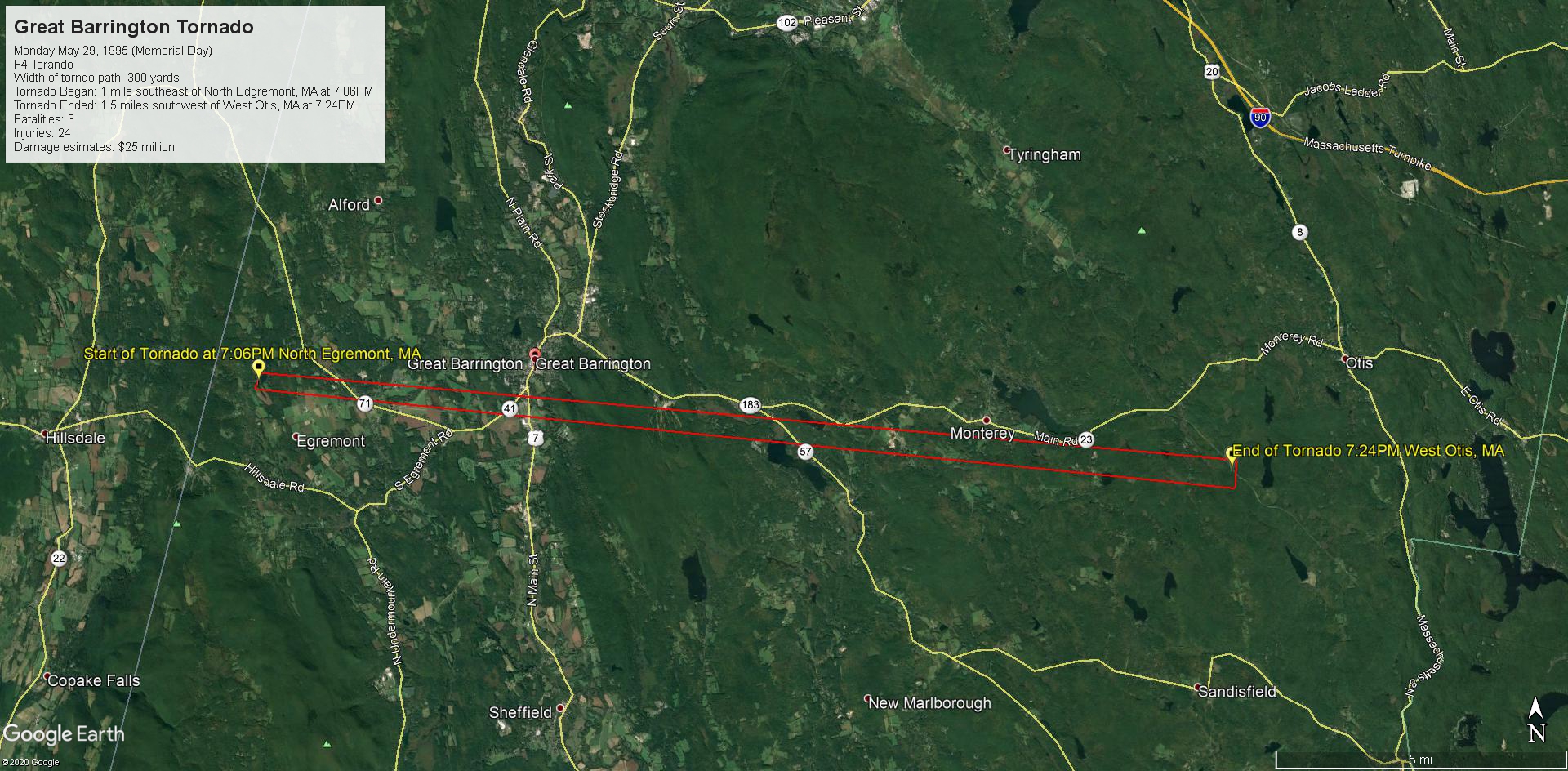 
Downloadable KMZ File |
||||||||||||||||
The Enhanced Fujita (EF) Scale classifies tornadoes into the following categories:
| EF0 Weak 65-85 mph |
EF1 Moderate 86-110 mph |
EF2 Significant 111-135 mph |
EF3 Severe 136-165 mph |
EF4 Extreme 166-200 mph |
EF5 Catastrophic 200+ mph |
 |
|||||
Photos & Video
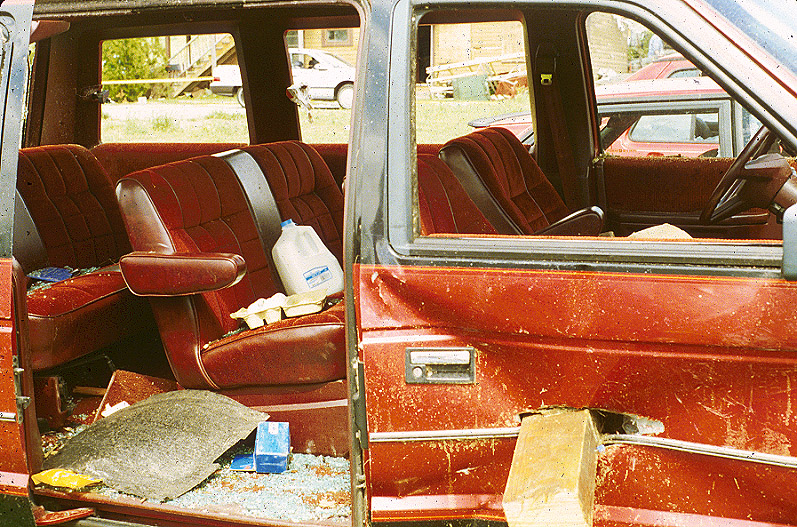 |
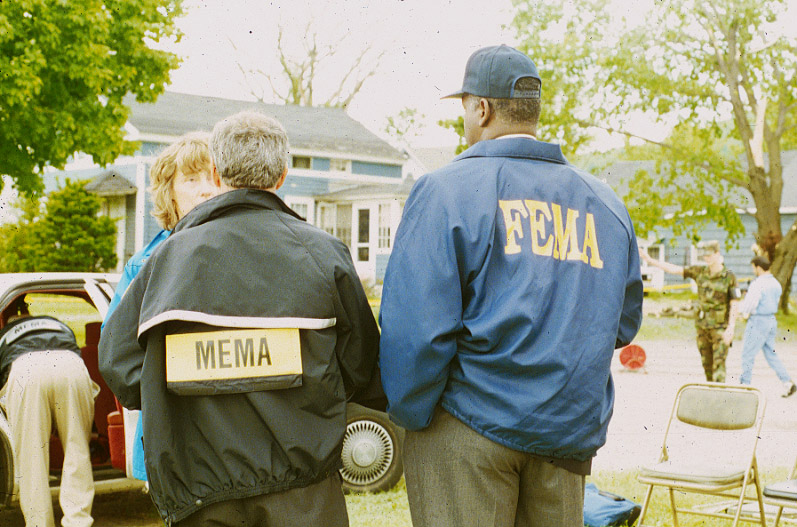 |
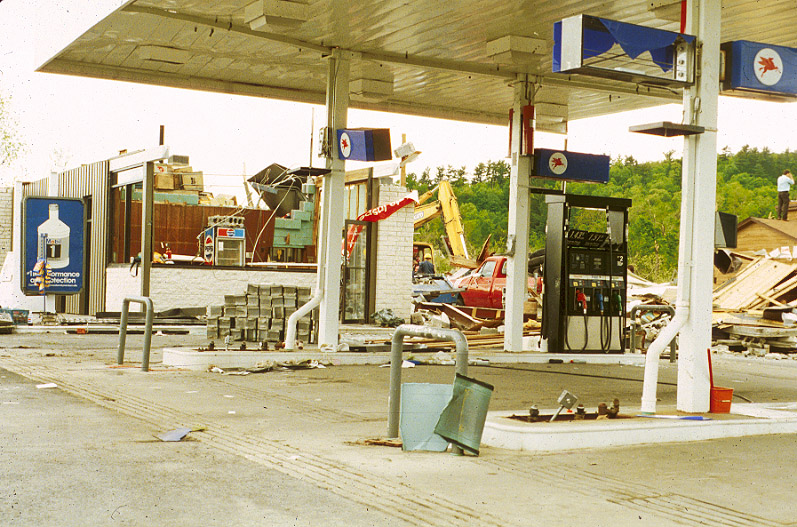 |
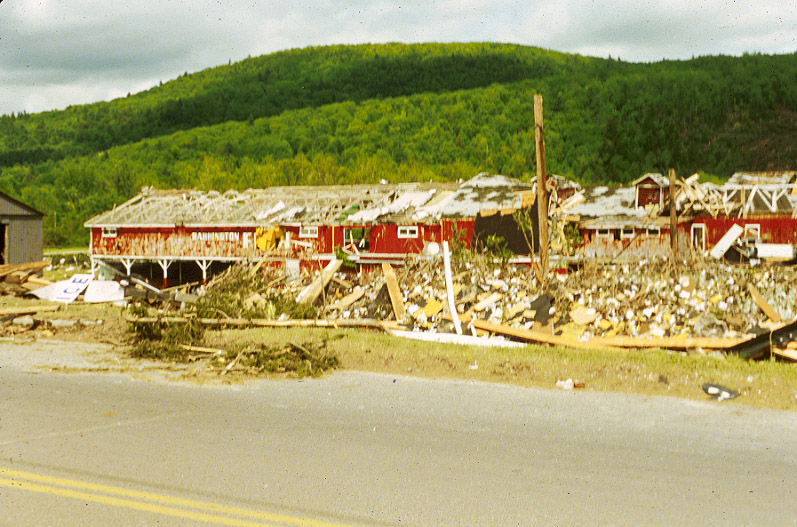 |
| Wooden beam struck a car (Courtesy of NWS Boston) |
MEMA and FEMA conduct survey damage (Courtesy of NWS Boston) |
Destroyed Gas Station (Courtesy of NWS Boston) |
Damage at the Fairgrounds in Great Barrington (Courtesy of NWS Boston) |
Radar
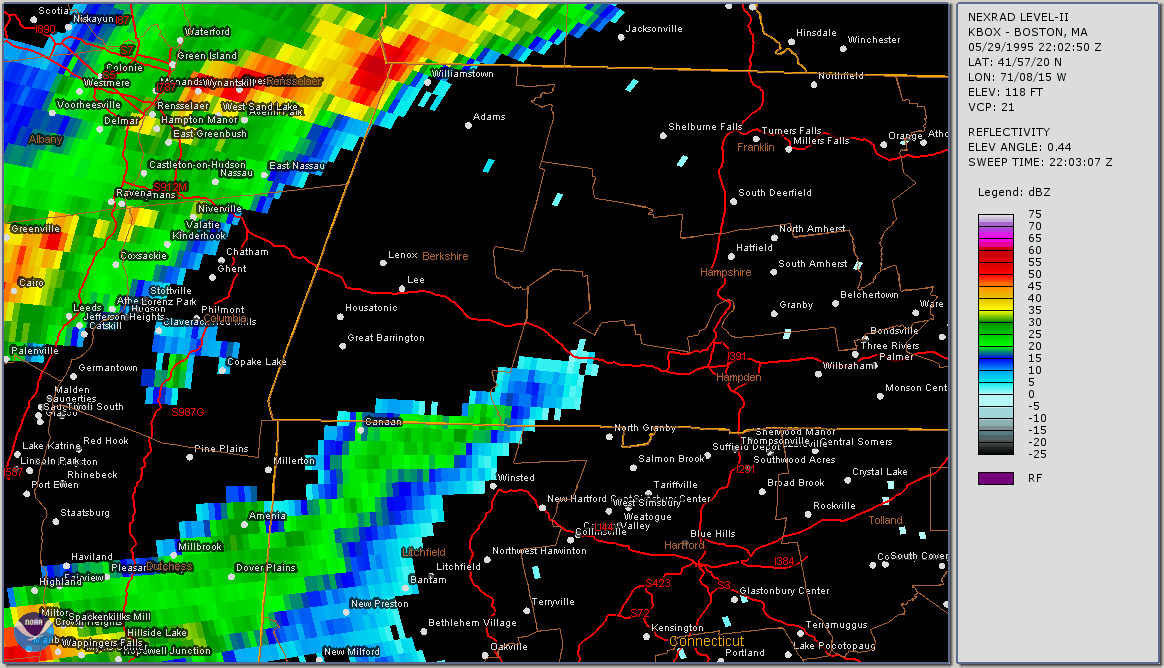 |
 |
| Radar - Reflectivity | Radar - Radial Velocity |
 |
Media use of NWS Web News Stories is encouraged! Please acknowledge the NWS as the source of any news information accessed from this site. |
 |